Tamara Stahl - 2025 No. 16
Tamara Stahl - 2025 No. 16
Details
Details
Overview
Overview
Shipping important note
Shipping important note
Delivery times are typically reliable and most instruments arrive within the estimated timeframe.
Should any unexpected delay occur, our team will keep you informed and provide support at every step. For all shipping details and exceptions, please see our Shipping Policy.
Details about GPSR
Details about GPSR





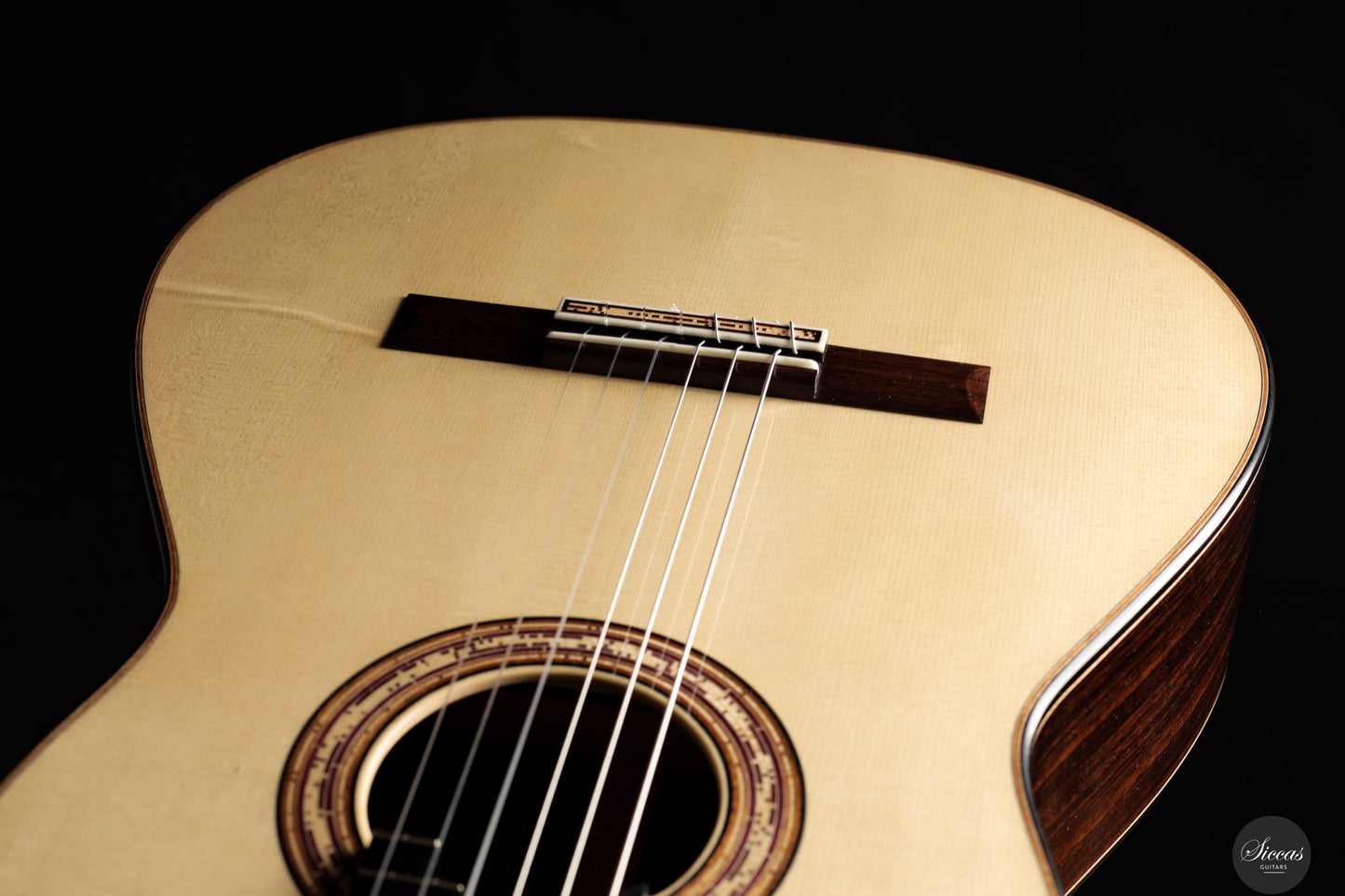



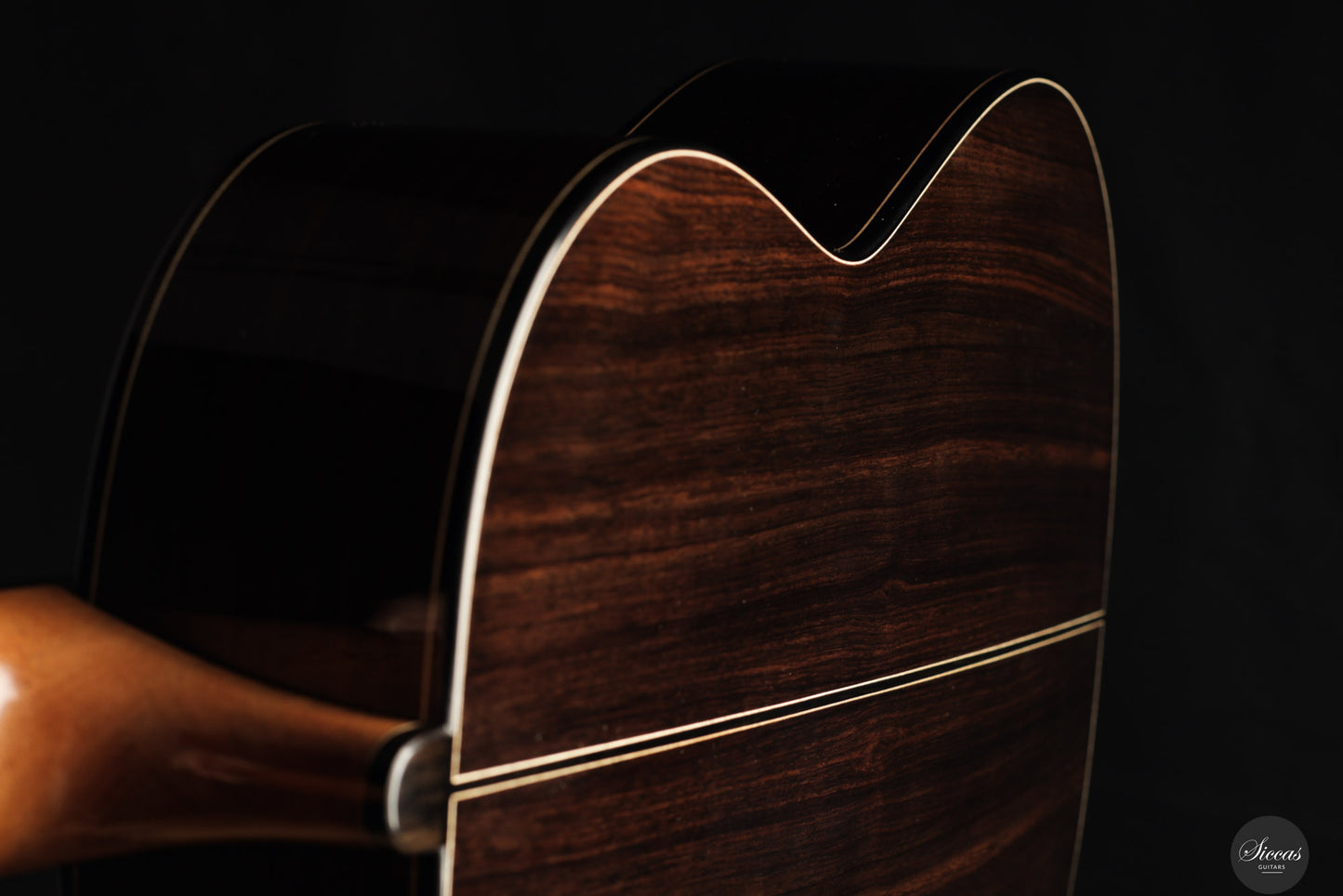




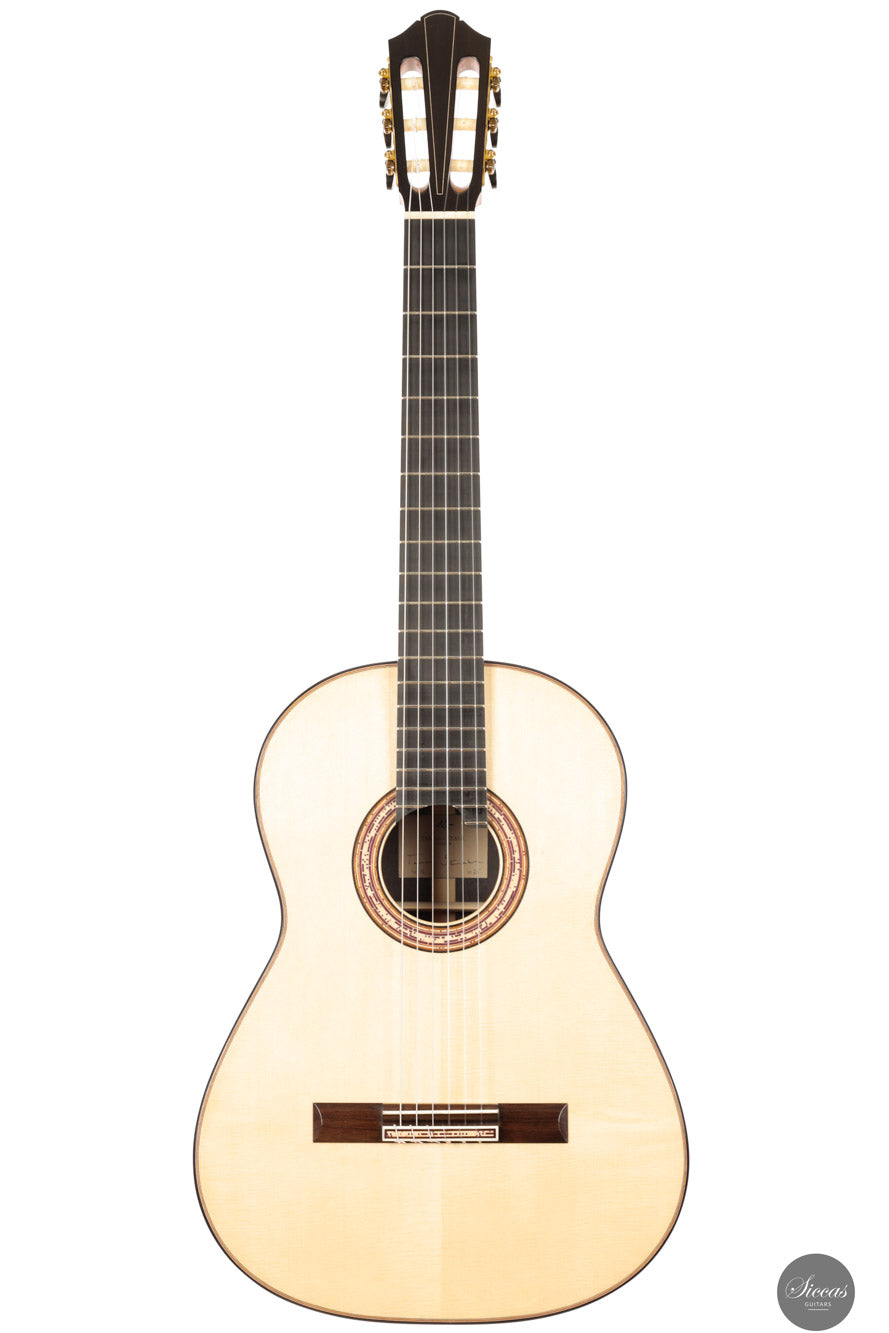
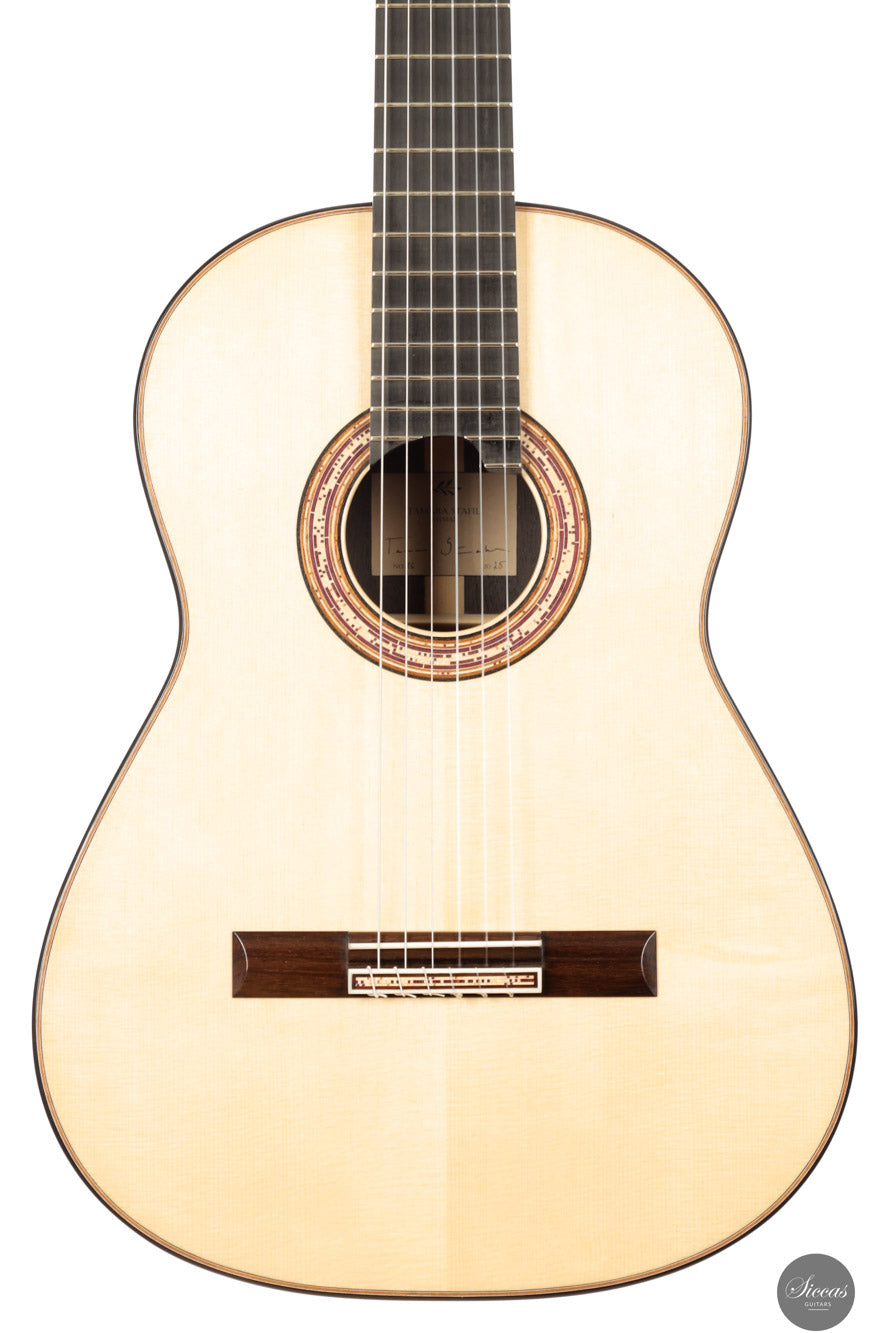
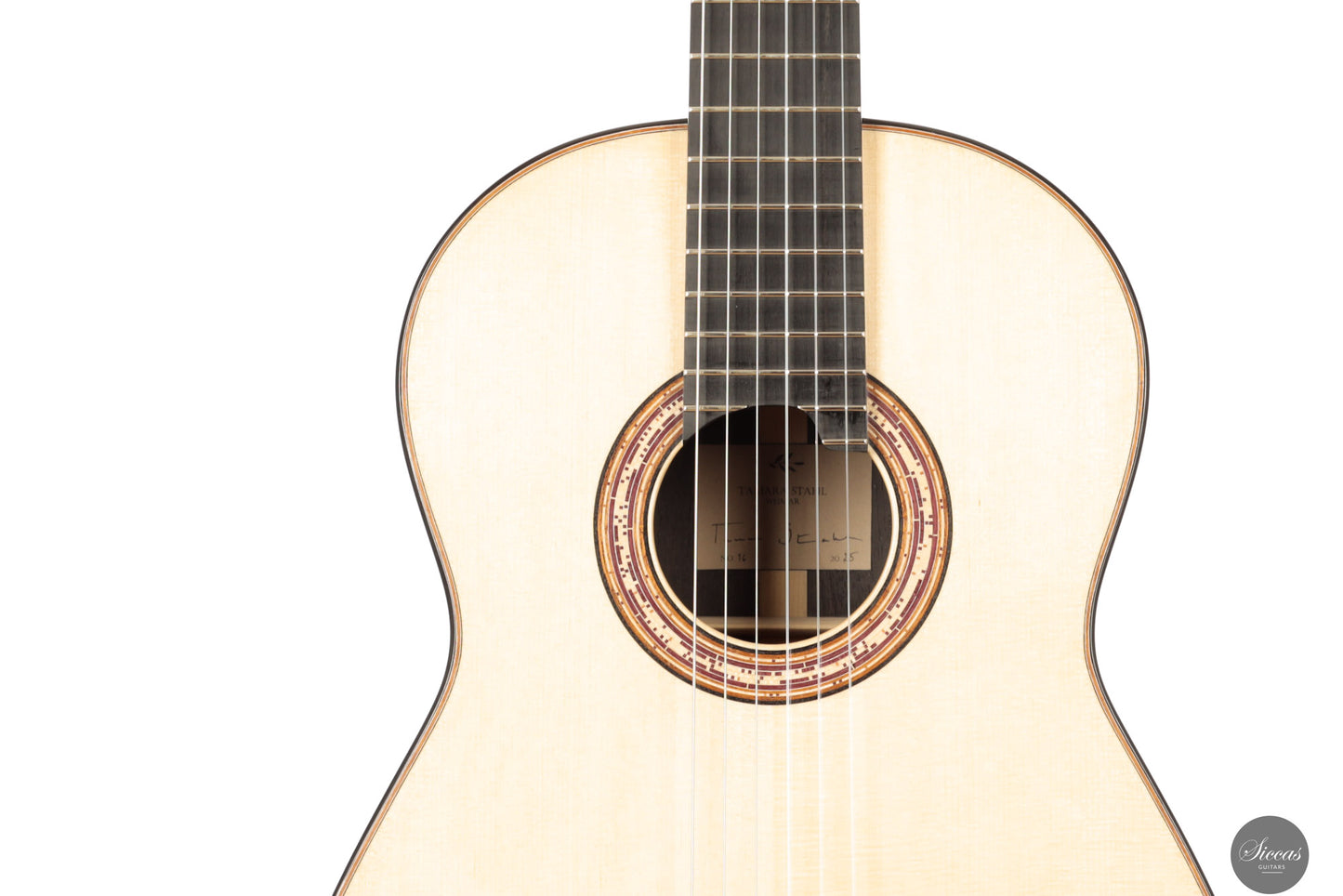




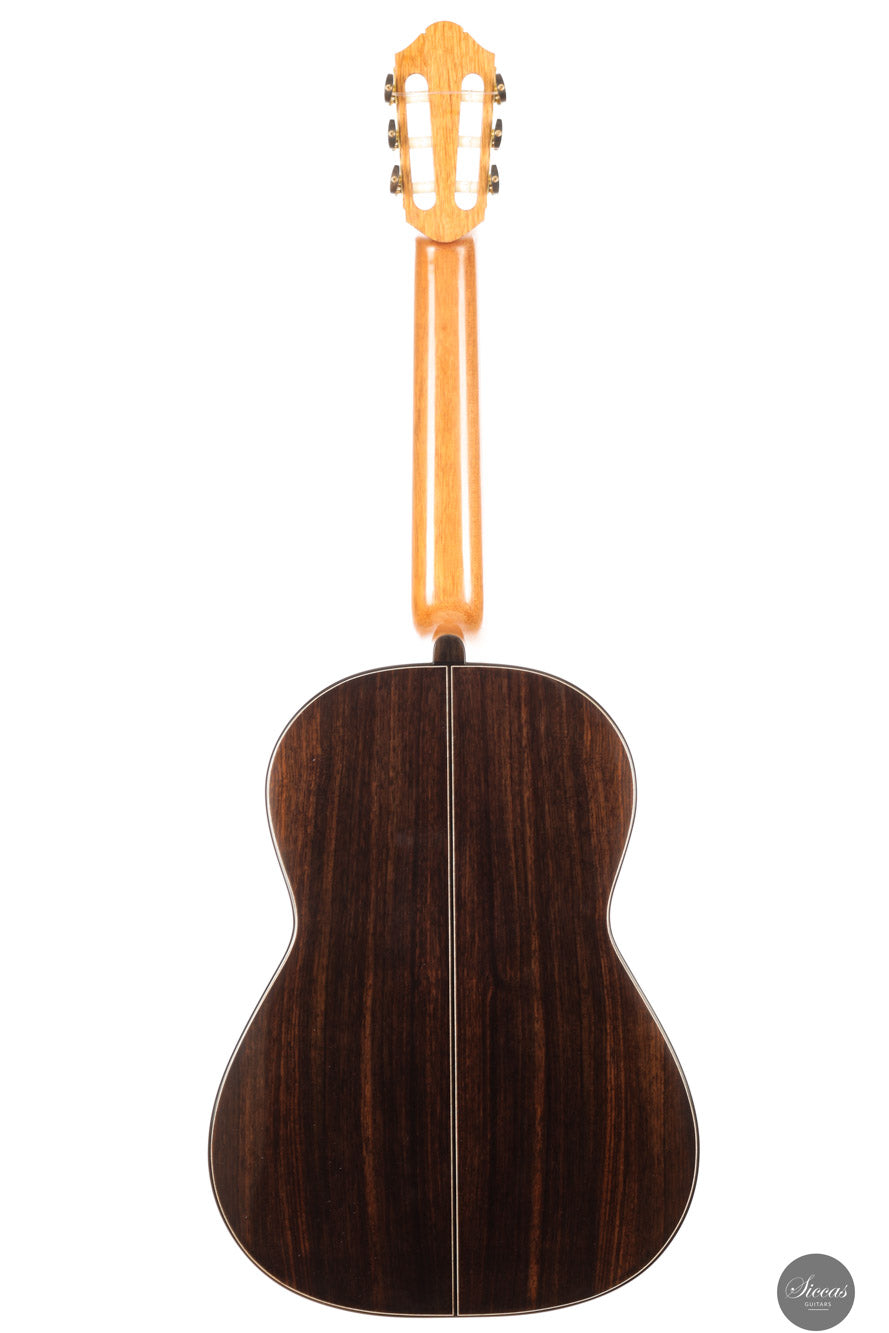


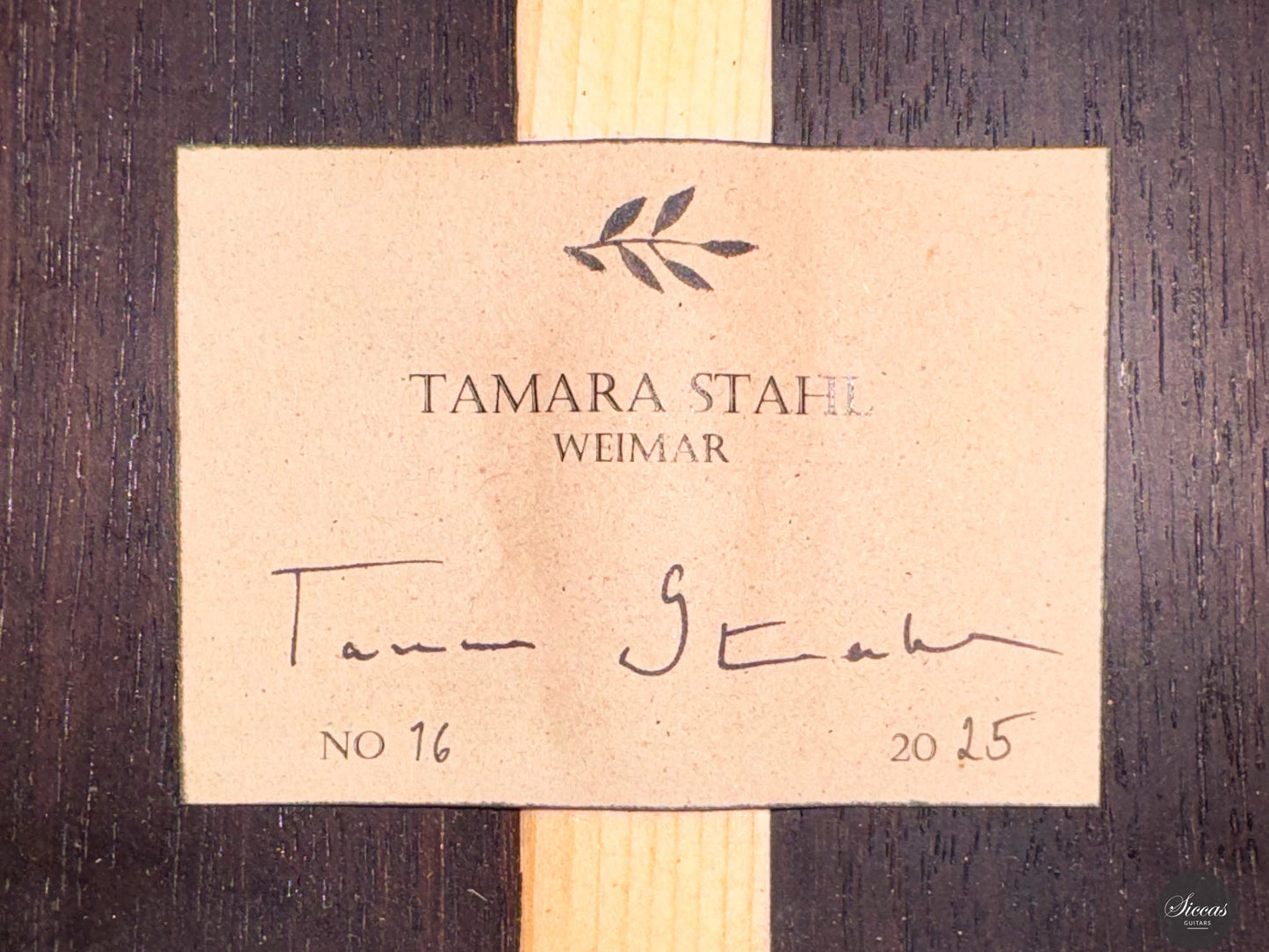
Video overview


More details about the guitar
About the luthier
Tamara Stahl began her journey in guitar making in 2016 while working at Siccas Guitars in Karlsruhe, Germany. Playing and studying a wide range of handcrafted instruments sparked her fascination with the construction and tonal character of fine guitars. In 2019, she graduated from the renowned instrument-making school in Mittenwald, Bavaria. To deepen her knowledge of the cultural and historical roots of the classical guitar, she moved to southern Spain, where she learned from experienced masters in the cradle of modern guitar making. Since 2022, she has been based in Weimar, Germany, sharing a workshop with fellow luthier Johanna Vogl, where both benefit from a collaborative yet independent working environment. Her guitars are characterized by precision, refined aesthetics, and a sound that combines the sweetness and clarity of traditional instruments with modern qualities of power and projection. Stahl continually develops her building system through small, deliberate refinements, striving for a balance of resonance, stability, and expressivity in every new instrument.About the guitar
This guitar, No. 16 from 2025, reflects Tamara Stahl’s matured building style and artistic vision. Constructed in the traditional Spanish manner, it features a spruce top paired with Indian rosewood back and sides, finished with French polish. The doubled sides, reinforced back, and carefully weighted bridge all contribute to enhanced projection, stability, and tonal richness. Tonally, the guitar offers clarity, sweetness, and a wide palette of colors. It responds quickly and evenly across registers, with excellent sustain and dynamic range. The trebles are clear and singing, while the basses are present without overpowering. Its character combines the intimacy and tonal beauty of traditional guitars with the headroom and power demanded in concert situations. The elevated fretboard ensures comfortable playability and effortless access to higher positions. The guitar’s visual design reflects Stahl’s personal interpretation of the Alhambra’s architectural motifs. The abstract rosette, with its fine geometric elements and subtle interplay of tones, was inspired by the domes and mosaics of Granada’s Moorish palace. The result is an instrument that unites traditional craftsmanship with modern artistry, both visually and acoustically.Regular care extends the life of the instrument
Even with careful use, a classical guitar may gradually change in appearance or respond to unstable storage conditions. Have a close look at your guitar regularly and be attentif to changes. If your instrument is suffering from its environement, it will let you know.
Protect Your Guitar: Handle with Care
Be mindful when touching your instrument with greasy or unwashed hands: any skin contact is a small attack on the varnish. Of course, a guitar is made to be played, but taking a few precautions helps preserve its beauty: wash your hands before playing, wear long sleeves, and avoid unnecessary direct skin contact with the body of the instrument.
Pro tip: Avoid playing with a button-up shirt, heavy jewelry, or a belt, as these can scratch the guitar. Also, make sure your guitar case is free of any objects that could damage the instrument during storage.
String care
A good habit to adopt is wiping down your strings briefly after each playing session. This small action significantly extends their lifespan and helps maintain a consistent, comfortable feel under your fingers.
Most importantly, clean strings are essential for keeping your instrument in tune. Corrosion, sweat, and dust can affect the uniformity of the strings and interfere with accurate tuning across the entire fingerboard.
Pro tip: If you're having trouble getting your guitar in tune, it might be time to change the strings. A useful test is to compare the pitch of the 12th fret harmonic with the fretted note at the 12th fret; if there's an unusually large gap between them, your strings may have lost their integrity and should be replaced.
Keep Your Shellac Finish Shining!
Got a guitar with a shellac (French polish) finish? Here's a simple trick: Take a clean microfiber cloth and gently breathe on the surface to create a light mist. Then, softly rub to remove fingerprints, sweat, and grease. That’s usually all it takes to keep it looking great, no products needed!
Pro tip: Every few years, treat your guitar to a check-up with a luthier to keep it in top shape.
Storing Your Guitar: Climate Matters
Your guitar can safely stay outside its case, as long as the surrounding environment maintains 42–55% humidity and a temperature between 18–25°C.
Keep in mind that humidity levels can still fluctuate inside the case, especially during seasonal changes.
- Too much humidity may cause overtightened strings and a dull tone.
- Too little humidity can lead to a bulging top, string buzz, or even cracks.
Avoid placing your guitar near radiators, air conditioners, or windows with direct sunlight.
Pro tip: Always close your guitar case while playing. This helps preserve a stable microclimate inside the case, so your instrument is protected the moment you put it back in.





















































